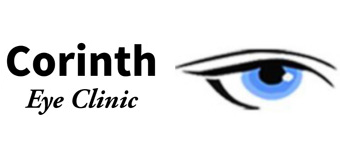Eye and Vision Exam

You may not know what to expect if you have never had an eye and vision exam in Corinth MS. We provide a brief explanation of a typical adult exam below.
How Often Should You Have an Eye Exam?
The American Academy of Ophthalmology (AAO) recommends that adults with healthy eyes and only minor visual issues schedule one eye exam in their twenties and another in their thirties. From age 40 to age 65, the AAO advises you to follow your doctor’s recommendations for eye exams. After age 65, you should plan to schedule an eye exam every one to two years.
A special note for diabetics
If you have any known problems with your eyes or vision, you should request an annual exam. This is true regardless of your age. We should also see you more often if you have diabetes, even when you have it under good control.
If you have type 1 diabetes, the American Diabetes Association (ADA) advises you to schedule an eye and vision exam within five years of receiving your diagnosis and annually after that. This recommendation stands regardless of age. Type 2 diabetics should request an exam as soon as possible after diagnosis and then yearly after that.
What to Expect at Your Next Eye Exam
If you are a new patient, the optometrist working with you will ask several questions to get to know you and understand your health better. These questions may include:
- Whether you currently require any form of vision correction, such as eyeglasses or contact lenses. We will also want to know if you are considering LASIK surgery to restore visual clarity.
- Whether you have a family history of vision and/or eye problems.
- Your current visual problems.
- Your health history, including past surgeries and current medications.
If you are a returning patient, your optometrist will ask if there have been any updates to your visual and general health.
Eye dilation
Your optometrist needs to place special drops in your eyes to increase the size of your pupils. Dilation is necessary to ensure that the optometrist can see the back of your eyes clearly. Your eyes will feel sensitive for at least an hour after your exam ends, so we recommend bringing a pair of sunglasses with you. We can also provide you with a pair of cardboard and one-time-use sunglasses to help you drive home safely.
Refraction test
During this test, your optometrist continually has you look through different strengths of lenses to determine if light bends correctly as it passes through the lenses into your eyes. The refraction test is highly accurate at detecting whether you have an issue like nearsightedness and helps our optometrists write the most effective prescription for your visual difficulties.
Visual acuity test
During the visual acuity test, your optometrist places a chart containing letters at various heights and boldness levels several feet away. You will then read the chart until you reach a row you cannot make out clearly. Each row has a number written by it, such as 20/20 or 20/40, indicating the clarity of your vision. If your optometrist tells you that your vision is 20/20, you should not need glasses or contacts.
The above represents only a small portion of the tests you may need to undergo during your eye and vision exam in Corinth, MS. Please ask additional questions or request an exam today.


